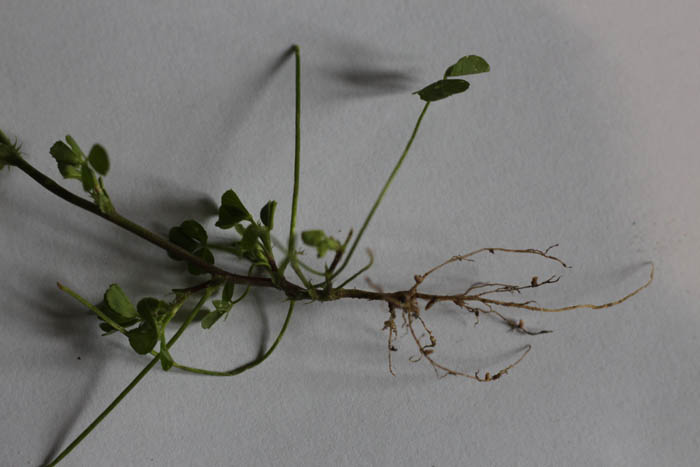Maybe you have seen this before, when you were helping in the garden by removing weeds. Some plants have weird looking roots, they almost look like someone tied some knots into them and in a way this is true. There are do called nodule bacteria or rhizobia living in the soil which get attracted by plants, mainly by legumes such as clover or soy beans and live together with them in a symbiosis, a relation in which both partners profit of living together. But let’s start in the beginning.

The nodule bacteria live in the soil and can sense some molecules released by the plant. Like this they can find the plant which attracts them. Once they got close enough to the plant, the bacterium also releases special molecules, the Nod signal, which makes the plant curl up the roots around the bacteria so that the nodules are formed. However, this only works if the plant and bacterium match, otherwise the bacterium is not attracted by the plant.
Once the nodule is formed the bacterium and plant are close enough to each other to work together. This means that the bacterium converts nitrogen (N2) from the air to ammonia (NH3), an essential nutrient for the plant, that is usually also part of fertilizer, and in exchange the plant provides the bacterium with a carbon-source on which it can feed. The symbiosis is thus making the life of both symbionts easier, or in other words: together they are strong!

However, the symbiosis between legumes and nodule bacteria is just one example out of many. Other famous examples are the clown fish and anemone or lichen which is a symbiosis of fungi and algae.
Sources:
https://en.wikipedia.org/wiki/Rhizobiaceae
https://en.wikipedia.org/wiki/Root_nodule
https://www.sciencedirect.com/topics/biochemistry-genetics-and-molecular-biology/root-nodule
https://link.springer.com/chapter/10.1007%2F978-981-32-9555-1_1
images:
https://www.landfreund.ch/pflanzenbau/wie-bakterien-soja-duengen-12077634.html
https://en.wikipedia.org/wiki/File:Nitrogen_fixation_Fabaceae_en.svg

